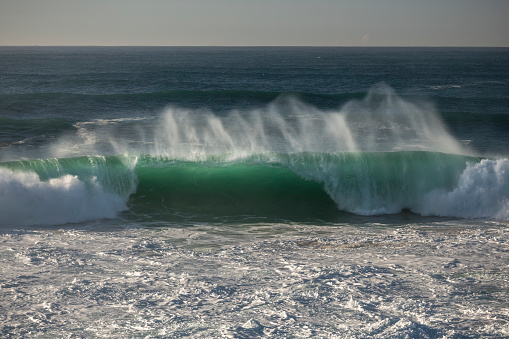On this page:

Using Waste to clean the planet
Clean Earth Technologies (CET) has a facility in South Australia to produce an environmental wonder sponge. The sponge can soak up mercury and oil spills and is being marketed for environmental cleaning. The sponge is made exclusively from waste materials and can pull oil from the oceans or mercury from the water supply. The facility is already capable of producing 1 ton of the polymer a day, and shipments to clients have begun. The Australian National Fabrication Facility and Microscopy Australia helped develop the polymer and are providing ongoing support.
More information available
Cement in a circular economy
The building industry has begun developing products that reuse and recycle waste. Microscopy Australia has supported researchers at the University of Sydney who are developing one such product. A cement blend that combines fly ash and carbon dioxide waste from power plants, as well as glass, to produce concrete. Such products have the potential to virtually eliminate waste as a concept and create a society where everything is a valuable resource.
More information available
Taking advantage of rapidly improving solar energy
Gelion Technologies is a company from Sydney University supported by Microscopy Australia to develop and commercialise cheap, fire-safe, and durable batteries that outperform lithium-ion technology. The purpose is to build houses with batteries included in their structure enabling consumers to take advantage of improving solar energy. The batteries will also serve as a buffer for the grid, enabling an ever-greater share of renewables while the grid is being fixed. They have recently had their first commercial installation in solar powered outdoor study benches at the University of Sydney.
More information available
Using the East Australian Currents as a renewable energy source
Integrated Marine Observing System (IMOS) Ocean radar observations have contributed to an assessment of the East Australian Current as a potential renewable energy resource. The research identified that an optimal location for any trial ocean energy would be around 25 km off the city of Port Macquarie, where the power could be extracted 74% of the time at 50 m depth with a relatively easy anchorage (water depth of 400 m).
More information available
Ultrafast, portable solar‐rechargeable batteries for the smart energy
A team of Australian National Fabrication Facility (ANFF) clients has developed an ultrafast and portable solar‐rechargeable battery with high efficiency, which can simultaneously harvest and store solar energy. These solar-rechargeable systems will provide renewable power sources for smart grids, electric vehicles, portable electronics, and the internet of things.
More information available
Recycling breakthrough to manufacture green aluminium
A recycling breakthrough at UNSW Sydney, Microscopy Australia offers new possibilities for the re-purposing of polymer-laminated aluminium products, such as coffee pods and post-consumer food packaging.
More information available